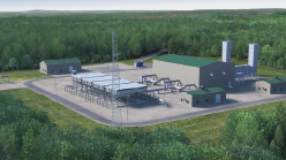The evolving role of natural gas continues to be at the forefront of US energy industry developments. This evolution to a lower carbon economy, including how growing renewable power generation and battery storage will affect gas-fired power generation, and the resulting effect on the utilization of midstream natural gas infrastructure is an important consideration for natural gas midstream operators and the value chain supporting the construction and operation of midstream infrastructure.
This study on the role of natural gas in the transition to a lower-carbon economy was undertaken to examine trends affecting energy use in the United States over a 20-year horizon, from 2020 to 2040, with a focus on understanding how natural gas complements a lower-carbon economy, while identifying potential challenges and opportunities for the natural gas pipeline industry. As a “Flagship Study” for the INGAA Foundation, this report presents a comprehensive strategic and analytical study to help educate key stakeholders, including energy consumers, infrastructure investors, and policy makers, about how natural gas and natural gas infrastructure will be needed and utilized in a lower-carbon economy.





